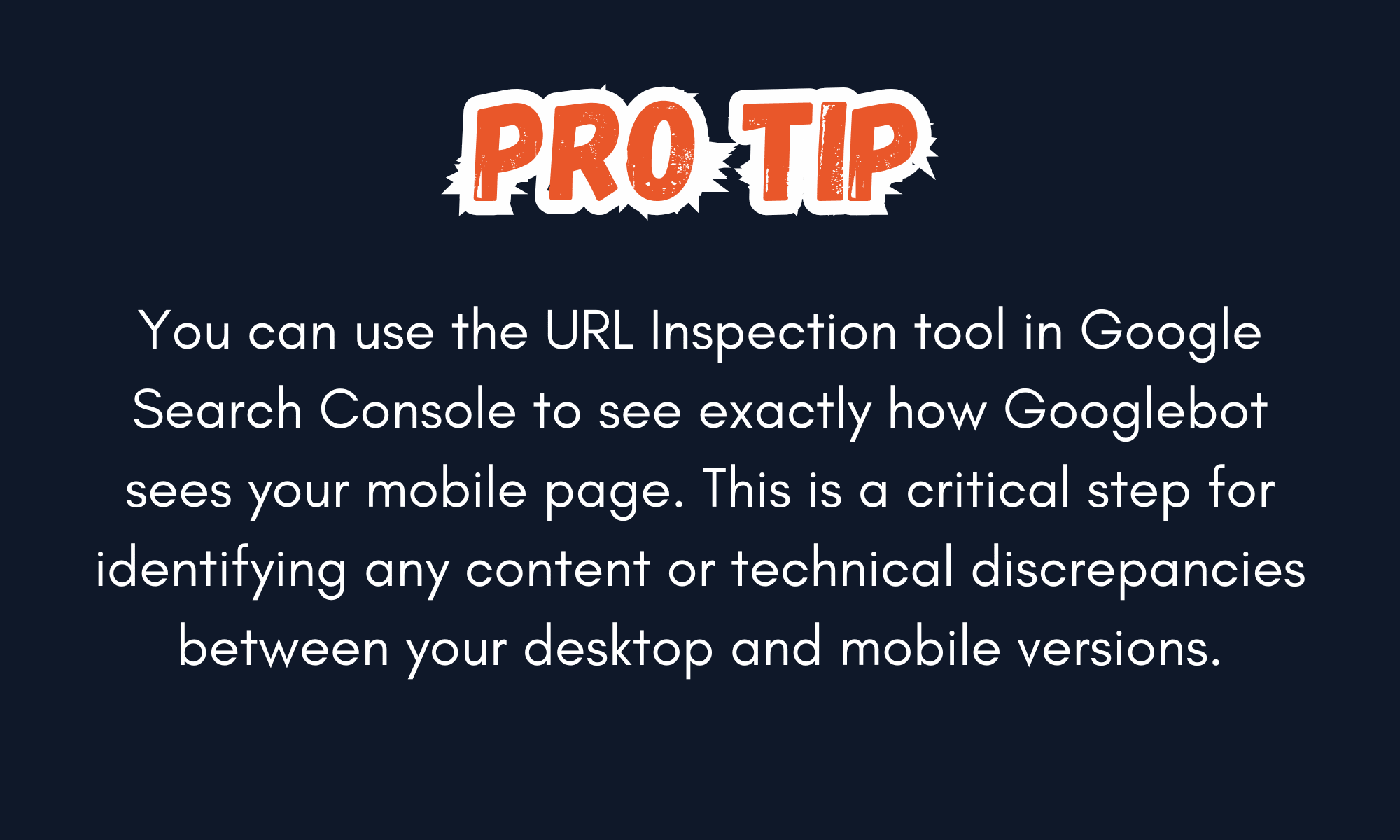Google's Mobile-First Indexing Guide

For years, a common SEO strategy was to build a beautiful, high-performing desktop website and then create a mobile version as an afterthought. This desktop-first mindset is not only outdated, it is now actively harming your search rankings. With the majority of search traffic coming from mobile devices, Google has made a fundamental shift in how it crawls and indexes the web. Since 2019, its primary method for evaluating a website has been through its mobile version. This is known as mobile-first indexing.
It's a clear signal from Google that the mobile user experience is no longer a luxury - it is the standard. If your mobile site is slow, difficult to navigate, or lacks the content of your desktop version, your entire online visibility is at risk.
If you are concerned about your mobile performance and want to ensure your website is ready for mobile-first indexing, contact us for a free mobile SEO audit.

The Problem: The Desktop-First Mindset
Many businesses still operate with a desktop-first mentality, which leads to several critical mistakes that mobile-first indexing will not forgive:
- Inconsistent Content: The most common mistake is a mismatch between your desktop and mobile content. If key text, images, videos, or internal links are present on your desktop site but are hidden or completely missing from your mobile version, Google will not see them. This means that all the valuable ranking signals from that content are lost.
- Poor Mobile Page Speed: A fast-loading desktop site means nothing if your mobile site is slow. Mobile users are often on slower connections, and a slow-loading mobile page will frustrate users and increase your bounce rate. Google uses mobile page speed as a ranking signal, so that a slow site will suffer in the rankings.
- Bad User Experience: Mobile-first indexing means Google is evaluating your site's usability from a mobile perspective. If your site has pop-ups that are difficult to close, text that is too small to read, or buttons that are too close together, it creates a poor user experience. This directly impacts your search rankings.
.webp)
The Solution: A Strategic Approach to Mobile Optimisation
Adapting to mobile-first indexing is not just about making a few cosmetic changes. It requires a complete technical and content strategy that prioritises the mobile user experience.
Step 1: Check Your Site’s Indexing Status
The first step is to confirm that Google is indeed using the mobile version of your site for its indexing. You can check this in Google Search Console under "Settings" > "About" > "Status". It will show you whether your site is being crawled with a mobile-first user agent.
Step 2: Ensure Content Parity
Your mobile site must contain all the content that is present on your desktop version. This includes:
- Text and Headings: Ensure all text, including long-form content, is present and readable.
- Images and Videos: All images and videos on your desktop site must be on your mobile site, with the correct file names, alt text, and structured data.
- Internal and External Links: Check that all internal links and important external links are available and clickable on your mobile site.
- Structured Data: The structured data on your desktop site must also be included on your mobile site to provide Google with the necessary context.
.webp)
Step 3: Prioritise Mobile Performance
Mobile performance is a key ranking factor. You can check your site’s performance using Google’s PageSpeed Insights.
- Improve Loading Speed: Optimise image sizes, leverage browser caching, and reduce server response time to ensure your pages load quickly on mobile connections.
- Create a Responsive Design: A responsive website automatically adjusts to the user’s screen size, ensuring a consistent user experience across all devices. This is Google’s recommended approach for mobile-first indexing.
The Appear Online Perspective
Mobile-first indexing is a fundamental shift that requires a strategic approach. We believe that a truly effective SEO strategy must be built on the principle that the mobile experience is the priority. Our technical SEO audits don't just look for desktop-first problems; we perform a comprehensive mobile-first analysis to identify any content discrepancies, performance bottlenecks, and user experience issues that are hurting your rankings. We provide a full roadmap to ensure your mobile site is not only ready for mobile-first indexing but is a high-performing asset that drives growth.
.webp)
Conclusion: The Mobile Experience Is Your SEO
In the modern digital landscape, the mobile experience is your SEO. Google has made it clear that websites that prioritise mobile users will be rewarded with better rankings. Ignoring mobile performance is no longer an option; it is a direct path to losing visibility. By ensuring your mobile site is fast, user-friendly, and contains all your valuable content, you are not just keeping up with Google; you are building a more robust and future-proof online presence.
If you are ready to ensure your website is optimised for the mobile-first world, contact us today for a strategic mobile SEO audit.
References:
https://developers.google.com/search/docs/appearance/ranking-systems-guide
https://developers.google.com/speed/docs/insights/v5/about
https://www.thinkwithgoogle.com/marketing-strategies/app-and-mobile/mobile-web-traffic-statistics/
https://www.searchenginejournal.com/ranking-factors/mobile-friendliness/
.avif)





.webp)


